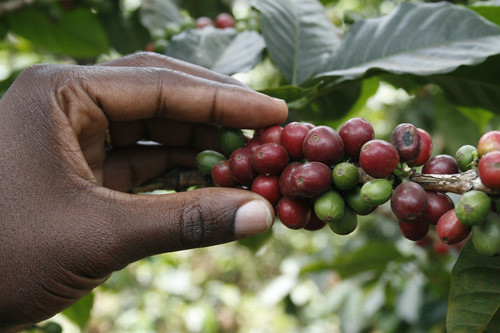
By George Munene
Grafting refers to the joining of the upper part of a plant (scion) to part of the stem and the root system (rootstock) of another plant. The horticultural technique is being employed by Kenyan coffee farmers to develop disease and drought-tolerant varieties.
"Most coffee farms are inherited, therefore the trees grown are early coffee varieties such as the SL28 and SL34 which are highly susceptible to the major coffee diseases; Coffee Berry Disease and Coffee Leaf Rust, " said Bornface Gitonga, a third-generation coffee farmer at Meru. "Earlier coffee varieties do however hold value in that they were bred to be drought resistant; their roots burrow deep into the soil and they still bear fruit even when their water intake is minimal."
Related News: Coffee farmers to earn more with increased participation in its trade
Related News: Boda boda powered coffee pulper increases processing capacity eightfold
For the scion, Bornface, like most other coffee farmers in the region, opted for Ruiru 11. This cultivar was developed by the Ruiru based Coffee Research Institute in 1985 in response to the Coffee Berry Disease and Coffee Leaf Rust outbreaks that devastated coffee farms in the 1960s. Additionally, Ruiru 11 begins to bear fruit in just 1½ years as opposed to the two years taken by older coffee strains.
"Despite its positives, Ruiru 11 has one major drawback: its roots are much shallow compared to earlier coffees like SL28. Its yield drops significantly if it goes without being watered," Bornface explains.
Related News: FarmBiz TV:Coffee husk fertiliser lifts farmers’ yields by a third.
To counter this he uses SL28 as his rootstock. He's, therefore, able to merge the best attributes of the two into a single plant releasing a sort of 'super coffee' cultivar that is drought tolerant yet resistant to the most damaging coffee diseases.
















Comments powered by CComment